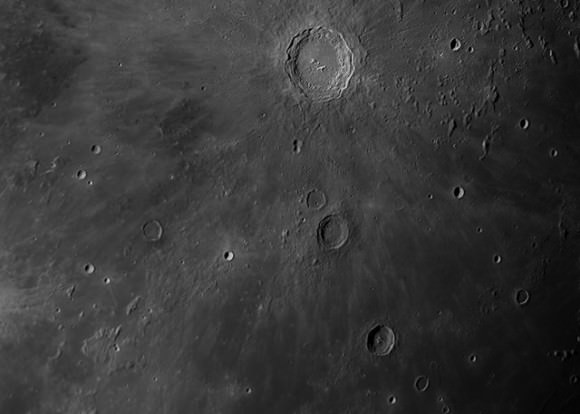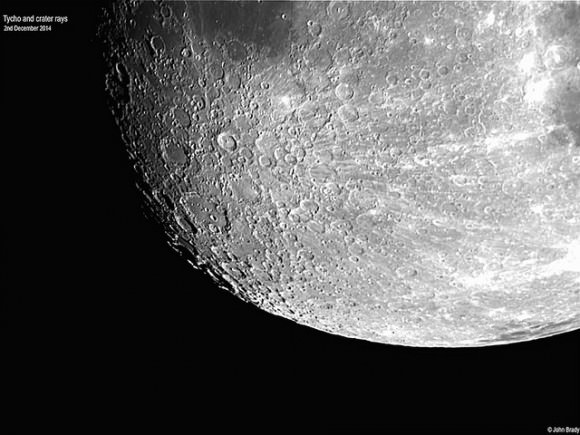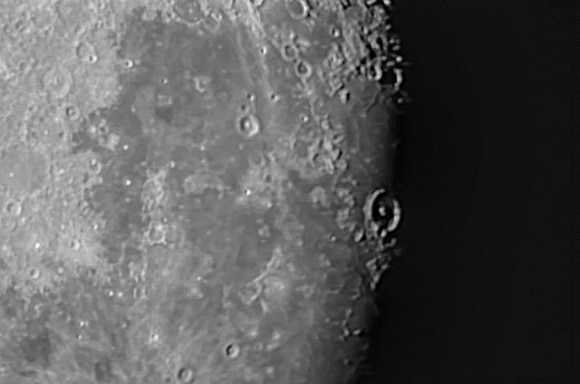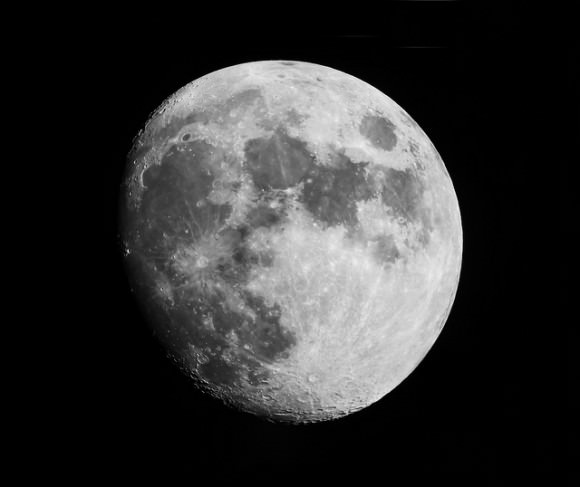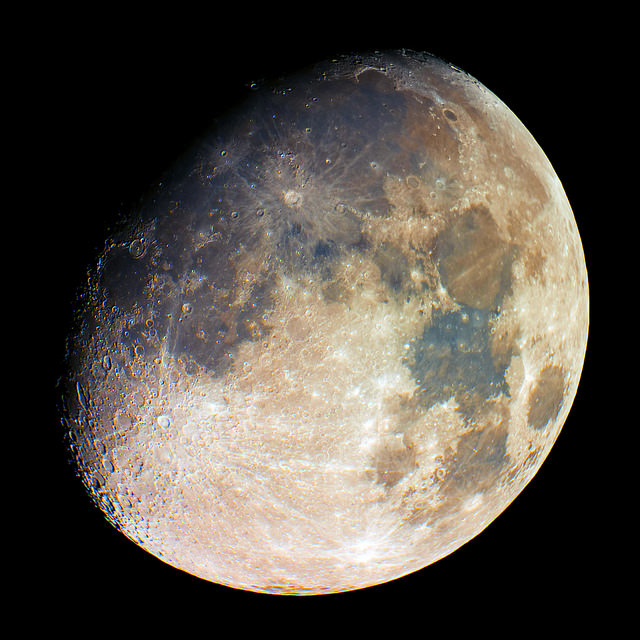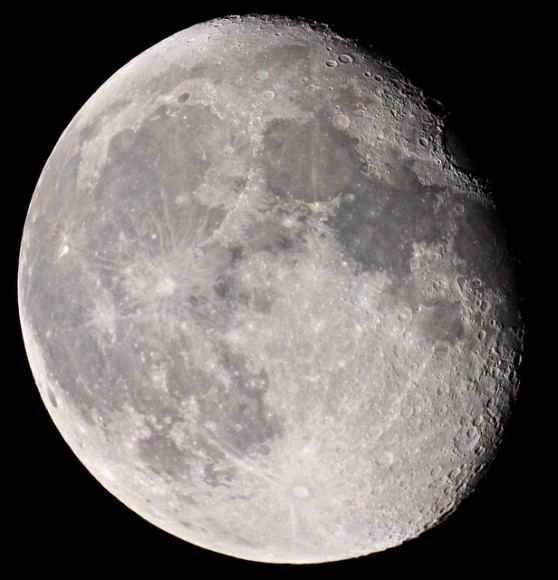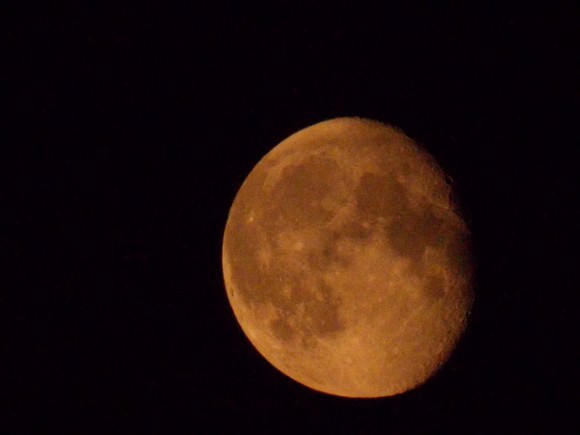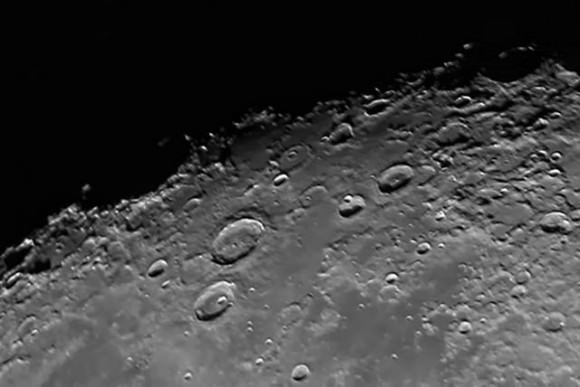While space explorers often set their sights far out in the Solar System — or even beyond — we can’t forget the majesty of our next-door neighbor. The Moon, a mere three days’ flight away from Earth during the Apollo years, is an easy beacon in the darkness for anybody to observe. Even without a telescope.
Lately, several Universe Today readers have contributed awesome shots to our Flickr pool showing some close-ups of this barren world. Take the panorama above by Roger Hutchinson, for example, showing the view along the terminator (darkness-light line). And we’ve collected some more stunners below.
